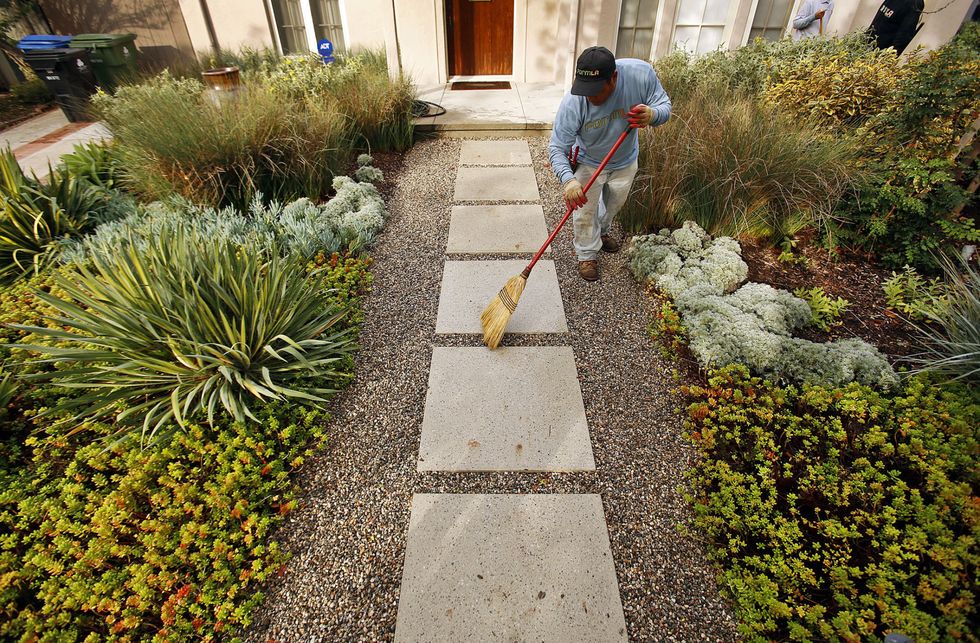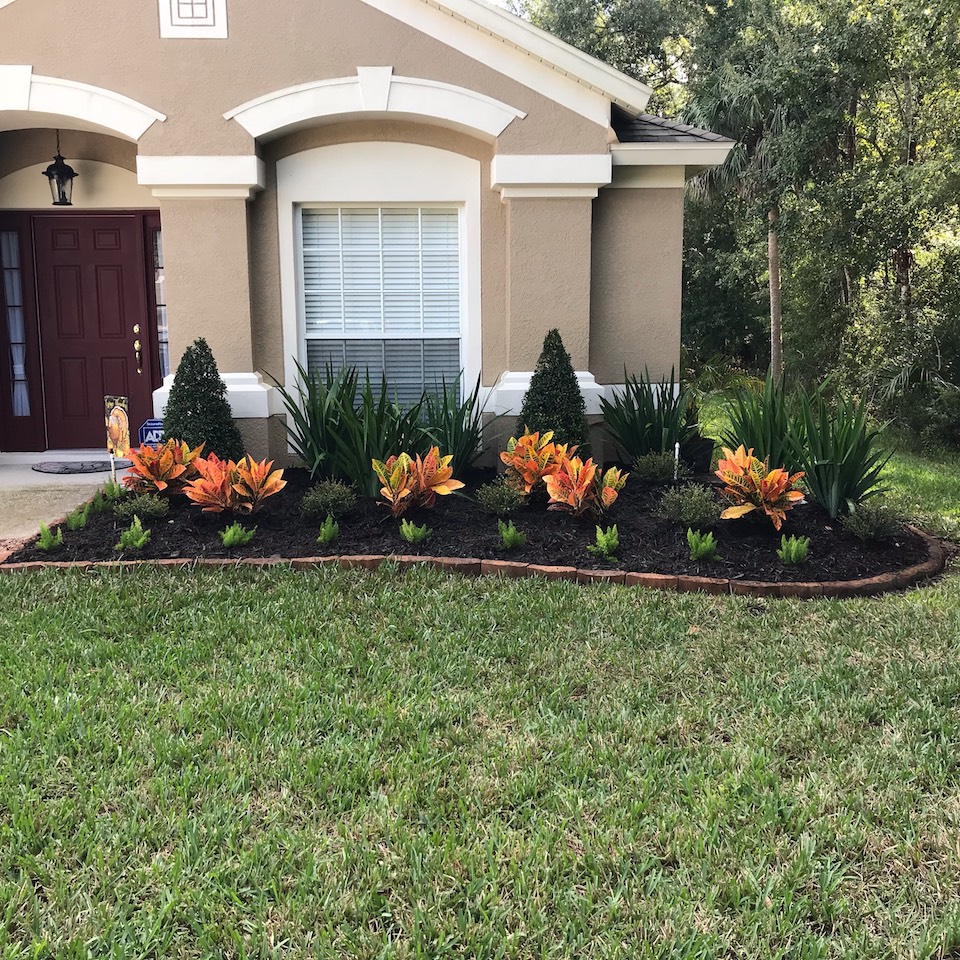Discover Creative Solutions with Specialist Palm Desert Landscaping
A Comprehensive Guide to Designing and Implementing Effective Landscaping Solutions
The art and science of landscape design prolong past plain visual appeals; they entail a thoughtful combination of design concepts, ecological stewardship, and useful implementation. A thorough overview to effective landscaping solutions starts with a thorough understanding of your outside room, stressing the relevance of proportion, unity, and equilibrium. As we check out sustainable methods and the selection of proper flora, the ramifications for biodiversity and community health end up being significantly obvious. What techniques can one employ to guarantee these landscapes not just thrive yet likewise grow attuned to their environments?

Understanding Landscape Design Principles
One might wonder what foundational aspects add to reliable landscape layout. At its core, successful landscape layout depends upon numerous crucial concepts that lead the setup and selection of aspects within a room. These concepts include unity, rhythm, proportion, and equilibrium, each offering to develop a harmonious outside setting.
Unity describes the natural connection amongst various elements, making certain that they work together aesthetically and functionally. Balance can be achieved via in proportion or unbalanced arrangements, permitting the landscape to feel stable and inviting. Percentage involves understanding the scale of components in connection with each various other and the surrounding environment, promoting visual consistency and convenience.

Analyzing Your Outdoor Area
Prior to carrying out the principles of landscape layout, a detailed analysis of your exterior area is crucial. This initial analysis helps define the range of your landscape design task and makes sure that your layout lines up with the one-of-a-kind qualities of your residential or commercial property. Begin by examining the measurements of your room, taking specific measurements to recognize the available location for various components such as pathways, outdoor patios, and yards.
Following, observe the existing features of your landscape, including topography, dirt high quality, and drainage patterns. These elements considerably affect plant choice and placement. Additionally, evaluate the sunlight direct exposure throughout different areas throughout the day, as this will certainly impact the types of plants that thrive in your garden.
Take into consideration the microclimates produced by frameworks, trees, and various other challenges, as they can affect temperature level and moisture levels. Take note of any type of existing plants or hardscape components that you want to retain or remove. This extensive evaluation prepares for a knowledgeable and effective landscape design solution, making certain that your layout is not only aesthetically pleasing yet lasting and likewise functional for several years to find.
Sustainable Landscape Design Techniques
Integrating lasting landscaping methods is important for producing an eco liable outdoor space. These techniques not only promote environmental balance however likewise boost the aesthetic and practical value of a landscape. One foundational strategy is the utilization of indigenous plants, which need much less water and maintenance while supporting local wildlife. Applying efficient watering systems, such as drip irrigation, minimizes water waste and ensures that plants receive ample wetness.

An additional effective method is the tactical positioning of shrubs and trees to offer natural windbreaks and shade, thus lowering energy expenses (Palm Desert Landscaping). Rain yards can be integrated into the landscape design to handle stormwater overflow properly, filtering system contaminants before they enter waterways
Selecting the Right Plants
Selecting the right plants for your landscape is vital to accomplishing both aesthetic charm and environmental harmony. The process begins with an understanding of your local climate, soil conditions, and the details microenvironments within your landscape. Analyzing aspects such as sunlight exposure, moisture degrees, and existing plants will certainly assist you select plants that grow in your distinct setting.
Consider incorporating native plants, as they are well-adapted to local conditions, need much less upkeep, and assistance local wildlife. Additionally, selecting a varied selection of types can enhance biodiversity while reducing the danger of disease and pest episodes. It is necessary to assess the growth practices, flowering durations, and seasonal shades of potential plants to create a cohesive and dynamic landscape.
Additionally, consider the intended usage of the room; for example, if the location will certainly experience high foot web traffic, select resilient ground covers. By attentively picking plants that line up with both your ecological demands and visual goals, you can produce a sustainable landscape that get redirected here not only improves your home but likewise adds positively to the bordering environment.

Application and Maintenance Techniques
As soon as the appropriate plants have actually been selected for your landscape, the focus moves to effective implementation and ongoing upkeep techniques. Effective try this site setup begins with proper website preparation, that includes dirt testing to establish nutrient degrees and pH, adhered to by modifying the dirt as required. Meticulously organize plants according to their development habits and light requirements, making sure sufficient spacing to advertise healthy growth.
Watering is an essential component of execution. Develop a watering timetable that thinks about the certain requirements of each plant types, readjusting for seasonal adjustments. Utilizing drip irrigation systems can enhance water effectiveness and lower runoff.
Maintenance strategies need to be executed to ensure the durability and vitality of your landscape. Routine jobs consist of weeding, mulching, and trimming to control growth and stop illness. Fertilizing needs to be conducted based upon dirt examinations, giving the required nutrients without over-fertilizing.
Keeping an eye on for bugs and diseases is crucial; early detection can protect against substantial damage. Last but not least, seasonal modifications to visit their website maintenance routines, such as preparing and winterizing perennials for spring growth, will ensure that your landscape continues to be visually appealing and healthy year-round.
Final Thought
Successful application and continuous maintenance better guarantee the longevity and vitality of landscapes. By integrating these aspects, landscapes can be transformed into lovely, useful atmospheres that advertise biodiversity and add positively to community wellness.
One may wonder what fundamental components contribute to reliable landscape style. At its core, effective landscape design pivots on numerous crucial principles that guide the setup and option of aspects within a room.Selecting the right plants for your landscape is essential to attaining both visual charm and eco-friendly consistency. It is important to assess the development habits, blooming durations, and seasonal colors of potential plants to create a natural and dynamic landscape.
As soon as the ideal plants have been chosen for your landscape, the focus shifts to reliable execution and recurring maintenance approaches.